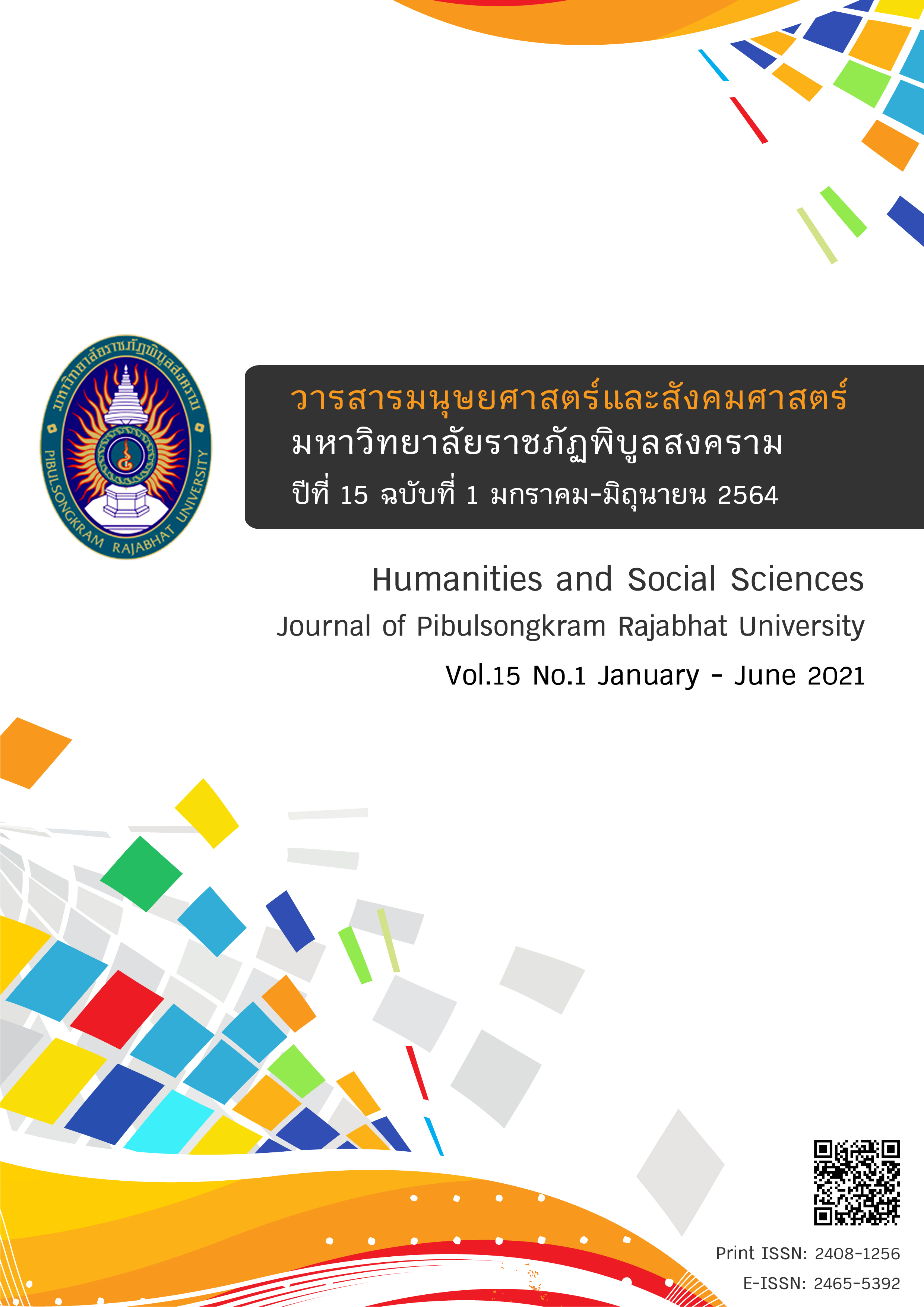Disparity in the Allocation of Mineral Royalty to Local Governments: A Case Study of the Ban Dong Sub-district Administration Organization and Mea Moh District in Lampang Province
DOI:
https://doi.org/10.14456//psruhss.2021.3Keywords:
Disparity, Allocation, Tax sharing, Mineral royalty, Local governmentAbstract
This research is aimed to study disparities in the allocation of mineral royalties, as well as the criteria and methods of mineral royalties for local administrative organizations with a case study of Ban Dong Sub-district Administrative Organization and Mae Mo Sub-district Municipality in Lampang Province. The study based on qualitative research through the collection of budget documents from local governments between 2012 and 2017, meeting agendas, laws and relevant documents. Additionally, in-depth interviews with chief executives of local administrative organizations, who are key role players in determining the budget, were carried out, including non-participatory observation during the discussions among representatives of the central government concerning negotiation of the allocation of mineral royalties. Analysis based on documentary analysis, qualitative variable analysis by using average percentages, as well as data analysis through interviews and observation. The findings revealed that disparities in the coal royalties collection of Ban Dong Sub-district Administrative Organization and Mae Mo Sub-district Municipality were caused by (1) the definition of “mining” pursuant to the Minerals Act B.E. 2510 refers to concession only within the areas, but does not include the dumping of mining waste and other activities relating to mining., (2) decreasing concessions in 12 plots of land in Ban Dong Sub-district Administrative Organization, which ended in 2006; as a result, the allocated budget consistently dwindled and lacked fiscal stability, while vast areas were used for dumping mining waste. This loophole is one reason why Ban Dong Sub-district Administrative Organization, in which most of its areas were used to dump mining waste and conduct other mining-related activities, did not receive the same percent of budget as usual. The criteria and methods of mineral royalty collection, based on the formula of percent division under the Determining Plans and Process of Decentralization Act B. 2542, base the allocations according to the sources of income, the number of organizations and population criteria. Such criteria lead to horizontal a fiscal imbalance or disparity in revenues and expenditures in both local governments where the gap tends to be wider. This phenomenon contradicts the goal of taxes collected and shared by the government. The goal is to bring about equality among local administrative organizations. Thus, to adjust the criteria for mineral royalty collection, the Office of the Decentralization to the Local Government Organization Committee has to take other criteria into consideration in order to create fairness when calculating budget allocations among the areas, e.g. area impact criteria and local expenses.
References
สกนธ์ วรัญญูวัฒนา. (2559). แนวทางปฏิรูปการกระจายอำนาจการคลังสู่องค์กรปกครองส่วนท้องถิ่น. กรุงเทพฯ: สำนักวิจัยและพัฒนา สถาบันพระปกเกล้า.
ธัชเฉลิม สุทธิพงษ์ประชา, ศุภวัฒนากร วงศ์ธนวสุ, ดิเรก ปัทมสิริวัฒน์, พีรสิทธิ์ คำนวณศิลป์, ลิลี่ โกศัยยานนท์, และหควณ ชูเพ็ญ (2557). การปฏิรูปการปกครองท้องถิ่นตามกระบวนทัศน์แห่งการบริหารกิจการสาธารณะแนวใหม่. ขอนแก่น: โรงพิมพ์คลังนานาวิทยา.
วีระศักดิ์ เครือเทพ, ตระกูล มีชัย, วีรชัย ตันพิพัฒน์, ฉมาวงศ์ สุริยจันทร์, รัตนา สำโรงทอง, เกษมสันต์ มโนมัยพิบูลย์, ดารินทร์ กำแพงเพชร, ชนณุพงศ์ ปานพ่วงศรี, และอัญชลี ฉวาง. (2560). โครงการจัดทำเกณฑ์ชี้วัดและค่าเป้าหมายขั้นต่ำมาตรฐานการจัดบริการสาธารณะขององค์กรปกครองส่วนท้องถิ่น (รายงานการวิจัย). กรุงเทพฯ: คณะรัฐศาสตร์ จุฬาลงกรณ์มหาวิทยาลัย.
Bahl, R. (2000). Intergovernmental Transfers in Developing and Transition Countries: Principles and Practice. Washington, DC: World Bank.
Bauer, A., Gankhuyag, U., Halling, S., Manley, D., & Venugopal, V. (2016). Natural Resource Revenue Sharing. New York: Natural Resource Governance Institute (NRGI).
Brown, C. C. & Oates, W. E., (1987). Assistance to the poor in a federal system. Journal of Public Economics, Elsevier, 32(3), 307-330.
International Council on Mining and Metals. (2009). Minerals Taxation Regimes: A Review of Issues and Challenges in Their Design and Application. Retrieved November 9, 2016 from https://bit.ly/2Hfwequ
Otto, J. M. (2001). Fiscal Decentralization and Mining Taxation. Retrieved November 9, 2016 from https://bit.ly/3dQnoM2
Downloads
Published
How to Cite
Issue
Section
License
Any articles or comments appearing in the Journal of Humanities and Social Sciences, Rajabhat Phibulsongkram University, are the intellectual property of the authors, and do not necessarily reflect the views of the editorial board. Published articles are copyrighted by the Journal of Humanities and Social Sciences, Rajabhat Phibulsongkram University.









